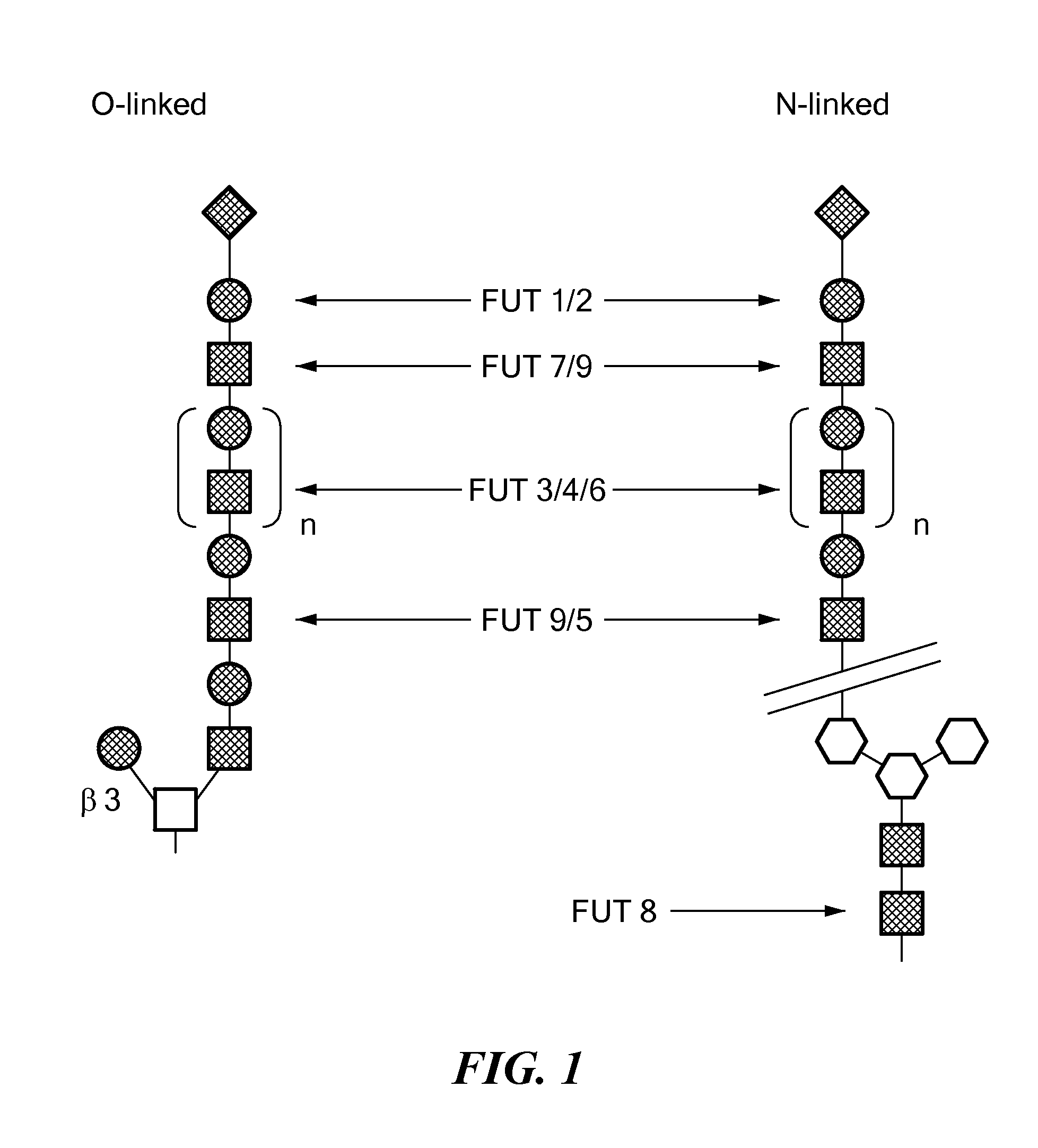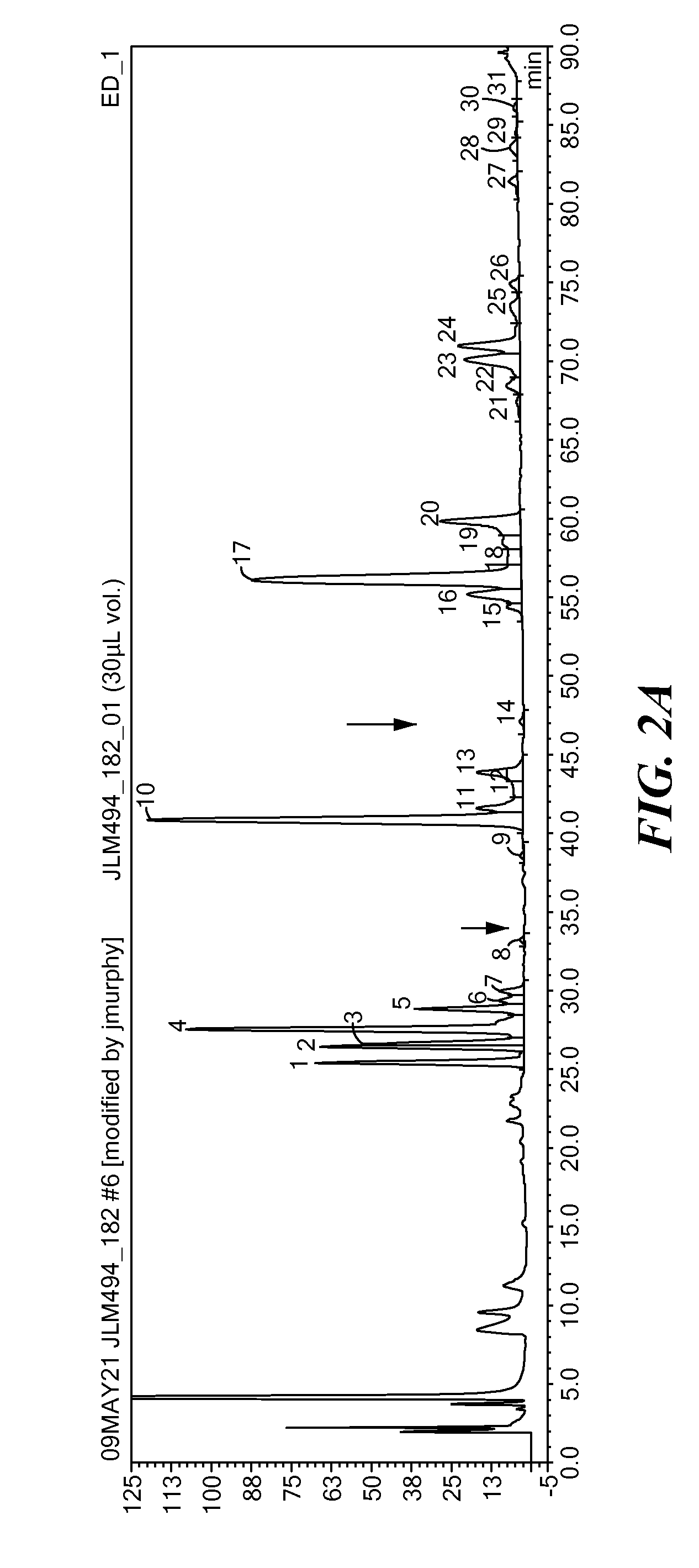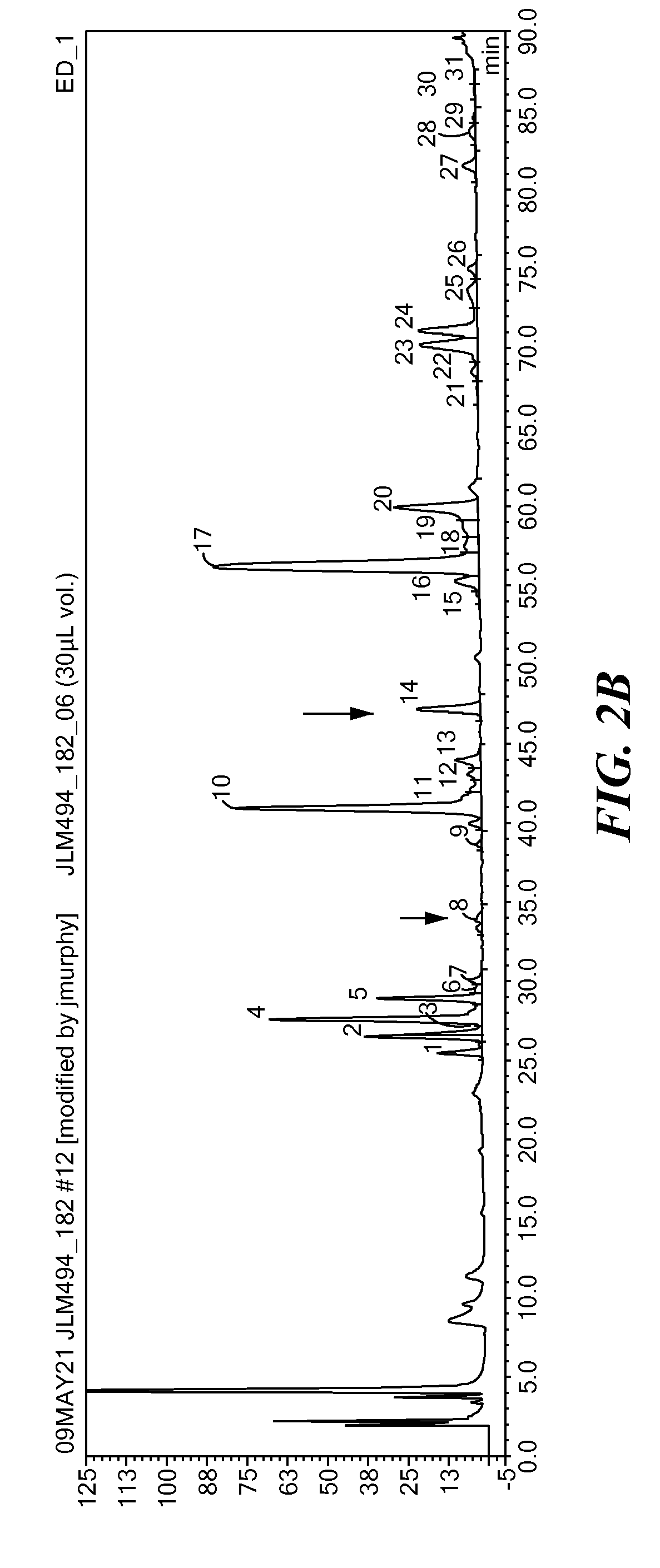Antennary fucosylation in glycoproteins from cho cells
a technology of glycoproteins and antennary fucosylation, which is applied in the field of antennary fucosylation in glycoproteins from cho cells, can solve problems such as affecting the immunogenic profile of products, and achieve the effect of higher or lower antennary fucosylation and higher expression levels
- Summary
- Abstract
- Description
- Claims
- Application Information
AI Technical Summary
Benefits of technology
Problems solved by technology
Method used
Image
Examples
example 1
Identification of Glycan Containing Antennary Fucose in CHO
[0160]A recombinant Fc fusion protein coding sequence (CTLA4-Ig; see WO 2007 / 076032) was transfected into CHO-K1 cells, amplified with methotrexate and single clones isolated by dilution cloning. The individual clones were expanded and cultured for 5 days, prior to being harvested. The resultant media (supernatant) was clarified and the recombinant Fc fusion protein was purified by protein A affinity chromatography. The harvested cells were concurrently lysed for isolation of total RNA and subsequent transcriptional analysis by quantitative, real-time PCR (qPCR). Glycans were released from the purified glycoprotein with N-glycanase and purified by PGC chromatography. The glycans were then analyzed by high performance anion-exchange chromatography with pulsed amperometric detection (HPAE-PAD) as generally described in Hayase et al., Analytical Biochemistry, 1993, 211: 72-80. For this experiment, a gradient of 2-100% 250 mM am...
example 2
Screening for Antennary Fucosylation in CHO Cells
[0162]The above identified antennary fucosylated species were monitored during the screening of clones from different CHO cell lines using the same methodology as in Example 1.
[0163]As shown in FIG. 5, this method was easily able to distinguish cell lines that produce antennary / bifucosylated glycans (e.g., cell line 2: CHO-K1) from cell line clones that do not (e.g., cell lines 1 and 3: CHO-DG44 and CHO-S clones), and to quantify very low levels of bifucosylated glycan species in different clones. For example, this method was able to detect bifucosylated species present as about 0.05% and 0.1%, respectively, of the total glycan pool (see FIG. 5, clones 1 and 2 of cell line 2). Accordingly, this method allows sensitive, rapid and high throughput identification and quantitation of antennary fucosylated glycans.
example 3
Production of Glycoproteins Having Altered Antennary Fucosylation
[0164]Multiple clones of CHO-K1 cells were used as host cells to produce recombinant CTLA4-Ig. Glycans from the resulting products were analyzed by HPAE-PAD as described above. As shown in FIG. 5 (middle panel) CTLA4-Ig having varying or altered levels of antennary fucosylation were produced by different clones. Accordingly, the parent CHO cell clones provide useful reagents for expression of recombinant glycoproteins having targeted levels of branched fucose.
Extensions and Alternatives
PUM
| Property | Measurement | Unit |
|---|---|---|
| volume capacity | aaaaa | aaaaa |
| volume capacity | aaaaa | aaaaa |
| molecular weight | aaaaa | aaaaa |
Abstract
Description
Claims
Application Information
 Login to View More
Login to View More - R&D
- Intellectual Property
- Life Sciences
- Materials
- Tech Scout
- Unparalleled Data Quality
- Higher Quality Content
- 60% Fewer Hallucinations
Browse by: Latest US Patents, China's latest patents, Technical Efficacy Thesaurus, Application Domain, Technology Topic, Popular Technical Reports.
© 2025 PatSnap. All rights reserved.Legal|Privacy policy|Modern Slavery Act Transparency Statement|Sitemap|About US| Contact US: help@patsnap.com



